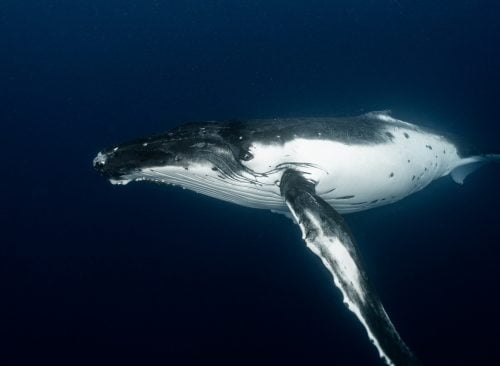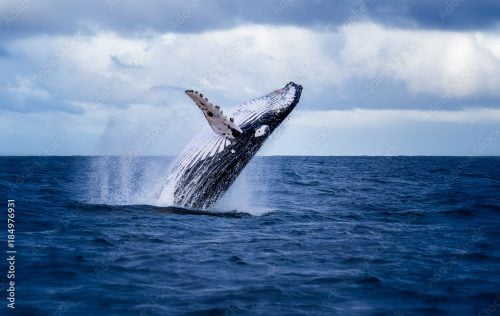
The blue whale (Balaenoptera musculus) is a marine mammal and a baleen whale. Reaching a maximum confirmed length of 29.9 meters (98 ft), it is the largest animal known to have ever existed1. Blue whales are blue-gray in color with lighter gray mottling in the form of large spots, which appear as if they were dabbed on with a huge paintbrush. The lower surfaces of the flippers are lighter gray or white in some instances. The blue whale has a wide head, a small dorsal fin located near the fluke, and 80–100 long grooves running lengthwise down the throat and chest. Its mouth contains up to 800 plates of short, wide, black baleen , or “whalebone,” with thick, coarse bristles used for catching food2. Here are some commonly asked questions about blue whales and their detailed answers:
How much does a blue whale weigh?
A: Blue whales are massive creatures, and their weight can vary based on their gender and age. On average, adult blue whales weigh between 100,000 to 200,000 kilograms (220,000 to 440,000 pounds). The female blue whales tend to be slightly larger and heavier than males.
What is the size of a blue whale?
A: Blue whales are also the longest animals on Earth. On average, they measure around 24 to 30 meters (79 to 98 feet) in length. However, some individuals can reach lengths of up to 33 meters (108 feet) or more. The tongue alone of a blue whale can weigh as much as an elephant.
What do blue whales eat?
A: Blue whales are baleen whales, which means they filter-feed on small marine organisms called krill. They consume massive amounts of krill daily, estimated to be around 3,600 kilograms (8,000 pounds) or more. Blue whales gulp a large volume of water containing krill into their mouths and then use their baleen plates to filter out the krill, swallowing them whole.
Where do blue whales live?
A: Blue whales can be found in oceans around the world, although they tend to prefer colder, more productive waters. They are known to undertake long migrations, often moving between feeding areas in polar regions during the summer and warmer breeding grounds in lower latitudes during the winter.
How long do blue whales live?
A: The lifespan of blue whales is estimated to be around 70 to 90 years. However, due to the challenges of studying these elusive creatures, precise data on their lifespan is limited.
Are blue whales endangered?
A: Yes, blue whales are classified as an endangered species. They were heavily hunted during the 20th century, leading to a significant decline in their population. Since then, conservation efforts and international protection measures have been implemented to help their recovery, but they still face threats such as entanglement in fishing gear and collisions with ships.
How do blue whales communicate?
A: Blue whales use low-frequency vocalizations to communicate with each other over long distances. These vocalizations, known as songs, can be heard by other blue whales many kilometers away. Scientists believe that these songs play a role in mating and maintaining social connections.
How fast can blue whales swim?
A: Blue whales are known to cruise at speeds of around 8 to 10 kilometers per hour (5 to 6 miles per hour). However, when they are feeding or migrating, they can increase their speed to about 20 kilometers per hour (12 miles per hour) for short bursts.
How many blue whales are left in the world?
A: The global population of blue whales is estimated to be between 10,000 and 25,000 individuals. Although this number is significantly reduced compared to historical levels, conservation efforts have helped stabilize their population to some extent.

Leave a Reply